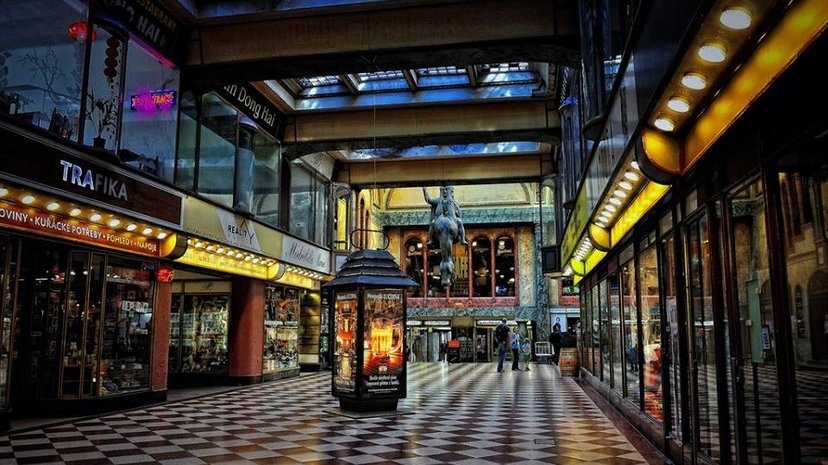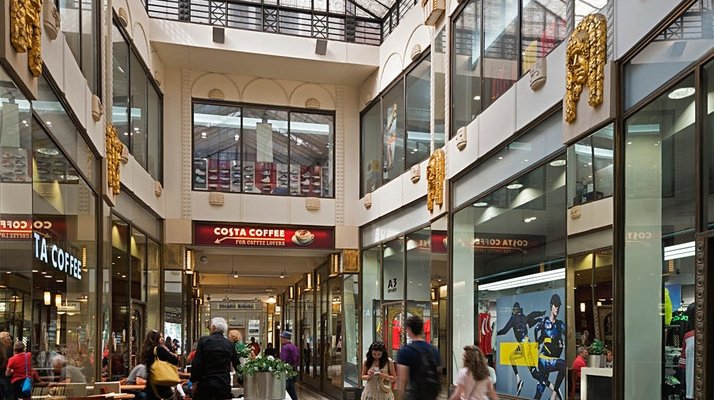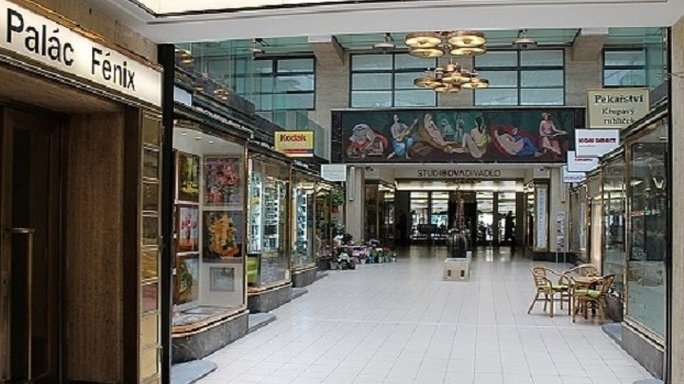With the first built at the start of the 20th century, the passageways are mainly found in the Nové Město neighbourhood of Prague 1. There was at that time a fashion for Pasáž around Europe and U Novaku, for one, was definitely modelled after a Parisian department store.

The Lucerna passage is quite large allowing you to wander up to V jámě Street as well as through to Štěpánská Street. Don’t exit quite yet though, turn right instead for a peek at the large Fransýr cheese shop with French cheese and wine as well as Řehoř samsa, a tiny book shop cum café. The books crammed into every available space are nearly all in Czech but are an eclectic collection. The café oozes out into the arcade and interestingly, you can smoke there, but not in the cafe.
Now however you have unknowingly left the Lucerna pasáž and passed through into another passage - U Nováků. The entrance to this passageway is on Vodičkova as well. If cakes and sweets are your thing, Patisserie St. Tropez will get your taste buds going with their beautiful cases full of cakes and sweets. You can even watch the bakers and decorators hard at work in their big open kitchen. Throughout this passage is a variety of fashion, jewellery, floral and home accessory shops. There is also a very cool camera shop with tons of old cameras on display. This is one of the only passageways whose front façade is quite beautiful, with its impressive design by symbolist painter Jan Preisler.

Exit Lucerna back onto Vodičkova and walk straight across the tram tracks and into the Pasáž Světozor. This short arcade has two places of interest; the insanely popular Ovocný Světozor ice cream parlour and Kino Světozor which shows a mix of art house and newly released films. At the end you can turn right into the fairly dull U Stýblů pasáž built in 1929 in a constructionist style. It will take you back to Wenceslas Square or turn left for the entrance to the beautiful Františkánské zahrady garden.
At Václavské náměstí 56 you can see the work of Josef Gočár, one of the country’s most famous Cubist architects and designers. The Fénix passage though is an early example of functionalism and as such could be considered a bit plain compared to some of the more decorative ones.

Let’s head away from Wenceslas Square for the final stop on our mini pasáž tour. From the Korunna passageway head down 28. Října to the Palác Adria. This hulk of rondo cubism was originally built in the 1920s for an Italian insurance company and the columns on the façade are meant to mimic Italian renaissance palaces. Enter from Národní Street and head straight back to the end. Here you’ll find a fascinating sculptural decoration featuring the 12 signs of the zodiac. There’s also a good café on the first floor. If you exit from the other entrance you’ll be on Jungmannova Street.




Comments